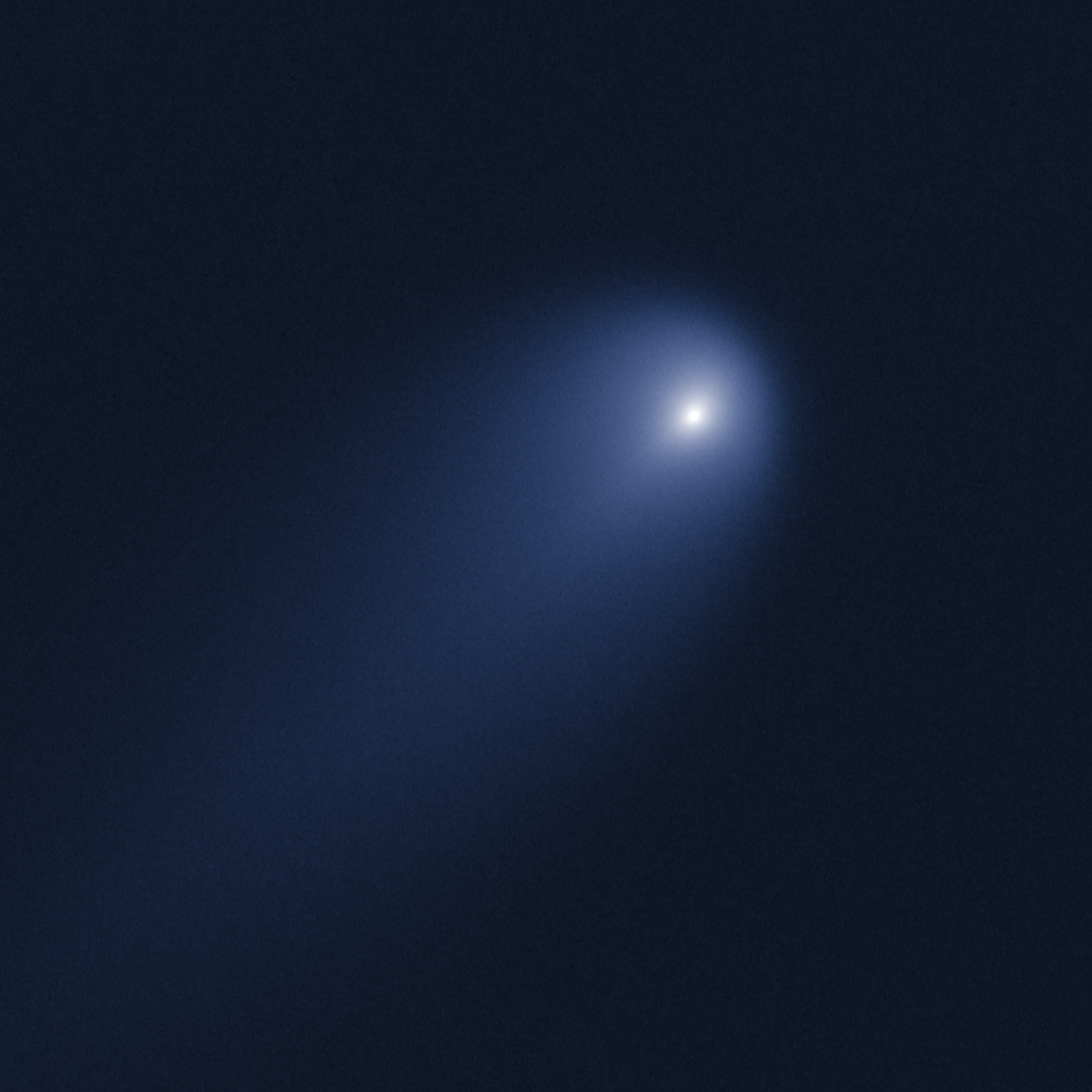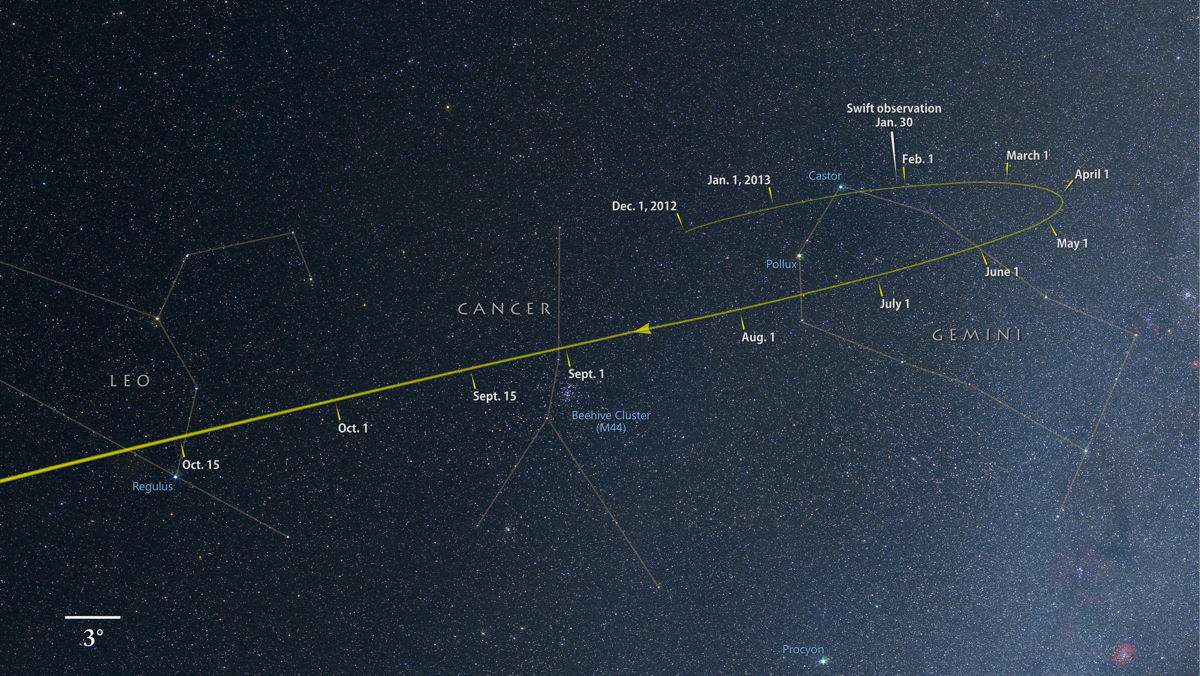Comet ISON: How to See Potential 'Comet of the Century' Online Today

The much-anticipated incoming Comet ISON, which some scientists hope will become the "comet of the century" later this year, may not be visible to the naked eye yet, but you don't have to wait months to see this icy wanderer. The comet takes center stage in an online telescope webcast today (May 19).
Comet ISON was first discovered last year and is currently expected to swing extremely close by the sun in late November, when it will be at its best and brightest of the year. In anticipation of the comet's arrival, the online Slooh Space Camera will offer live telescope views of the object beginning at 4:45 p.m. EDT (2045 GMT).
You can watch the Comet ISON webcast live on SPACE.com, courtesy of Slooh Space Camera. [See the more amazing photos of Comet ISON]

Today's webcast marks Slooh's fourth monthly webcast dedicated to tracking Comet ISON's progress through the solar system. During today's 30-minute live show, Slooh officials will provide views of Comet ISON from the firm's remotely operated telescopes in the Canary Islands, off the west coast of Africa.
Senior space scientist Padma Yanamandra-Fisher of the Space Science Institute in Boulder, Colo., will join Slooh producer Paul Cox in the comet webcast. Yanamandra-Fisher is helping coordinate NASA's Comet ISON Observing Campaign to track the comet. The international campaign is bringing together scientists around the world to plan out observations of ISON.
NASA has already used several spacecraft, including sun-watching Stereo probes and the Hubble Space Telescope, to observe ISON. An unmanned balloon mission is also among the expeditions planned to observe ISON.
Comet ISON has drawn worldwide attention from stargazers and scientists, including NASA, because of its close approach to the sun on Nov. 28, when it will be just 730,000 miles (1.2 million kilometers) from the sun. During that close encounter with the sun, Comet ISON could become one of the brightest comets in decades. However, the comet could also fizzle out.
Get the Space.com Newsletter
Breaking space news, the latest updates on rocket launches, skywatching events and more!
Comet ISON was discovered in September 2012 by Russian amateur astronomers Artyom Novichonok and Vitali Nevski using the International Scientific Optical Network (ISON) of remotely operated telescopes. The comet is officially known by the identification C/2012 S1 (ISON).
On April 10, scientists used the Hubble Space Telescope to observe Comet ISON. At the time it was about 386 million miles (621 million kilometers) from the sun and 394 million miles (634 million kilometers) from Earth.
When observed by Hubble, the comet's nucleus was about 3 miles (5 km) across and a dusty tail that stretches more than 57,000 miles (92,000 km) long.
Editor's note: If you have an amazing picture of Comet ISON or any other night sky view that you'd like to share for a possible story or image gallery, send photos, comments and your name and location to managing editor Tariq Malik at spacephotos@space.com.
To follow the Slooh webcast directly using Slooh's iPad app or the Slooh website, visit: http://www.slooh.com.
Email Tariq Malik at tmalik@space.com or follow him @tariqjmalikand Google+. Follow us @Spacedotcom, Facebookand Google+. Original article on SPACE.com.
Join our Space Forums to keep talking space on the latest missions, night sky and more! And if you have a news tip, correction or comment, let us know at: community@space.com.

Tariq is the Editor-in-Chief of Space.com and joined the team in 2001, first as an intern and staff writer, and later as an editor. He covers human spaceflight, exploration and space science, as well as skywatching and entertainment. He became Space.com's Managing Editor in 2009 and Editor-in-Chief in 2019. Before joining Space.com, Tariq was a staff reporter for The Los Angeles Times covering education and city beats in La Habra, Fullerton and Huntington Beach. In October 2022, Tariq received the Harry Kolcum Award for excellence in space reporting from the National Space Club Florida Committee. He is also an Eagle Scout (yes, he has the Space Exploration merit badge) and went to Space Camp four times as a kid and a fifth time as an adult. He has journalism degrees from the University of Southern California and New York University. You can find Tariq at Space.com and as the co-host to the This Week In Space podcast with space historian Rod Pyle on the TWiT network. To see his latest project, you can follow Tariq on Twitter @tariqjmalik.









